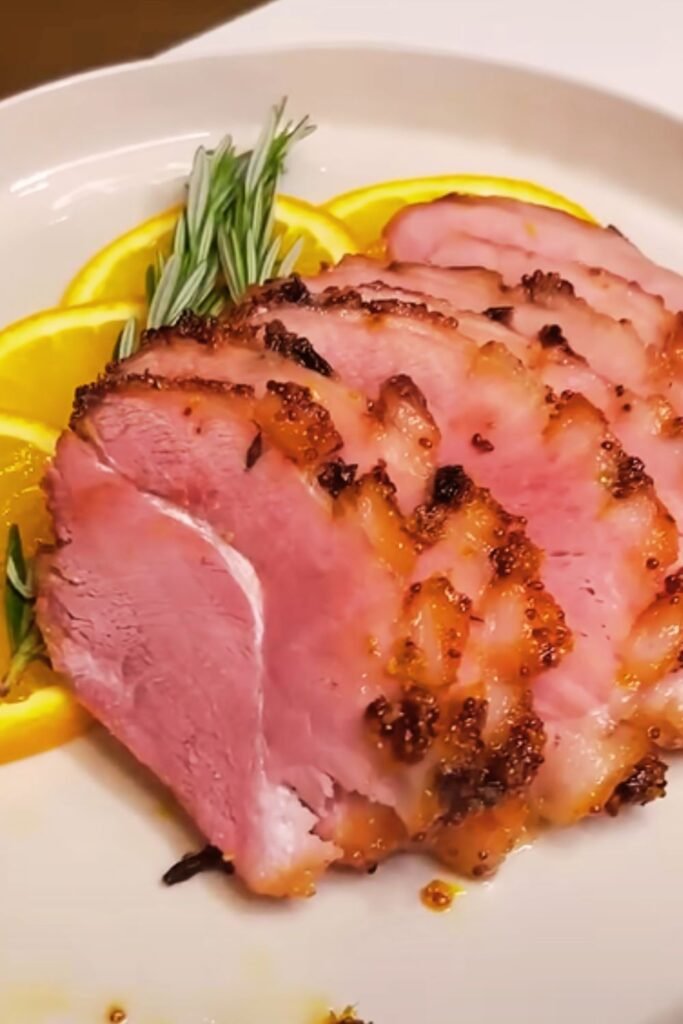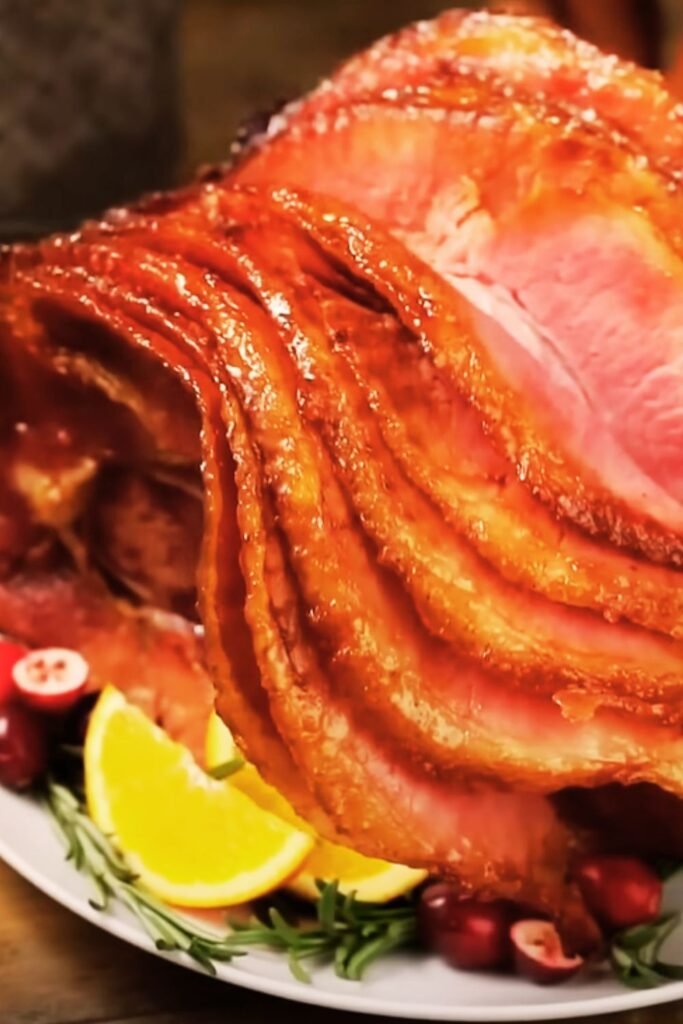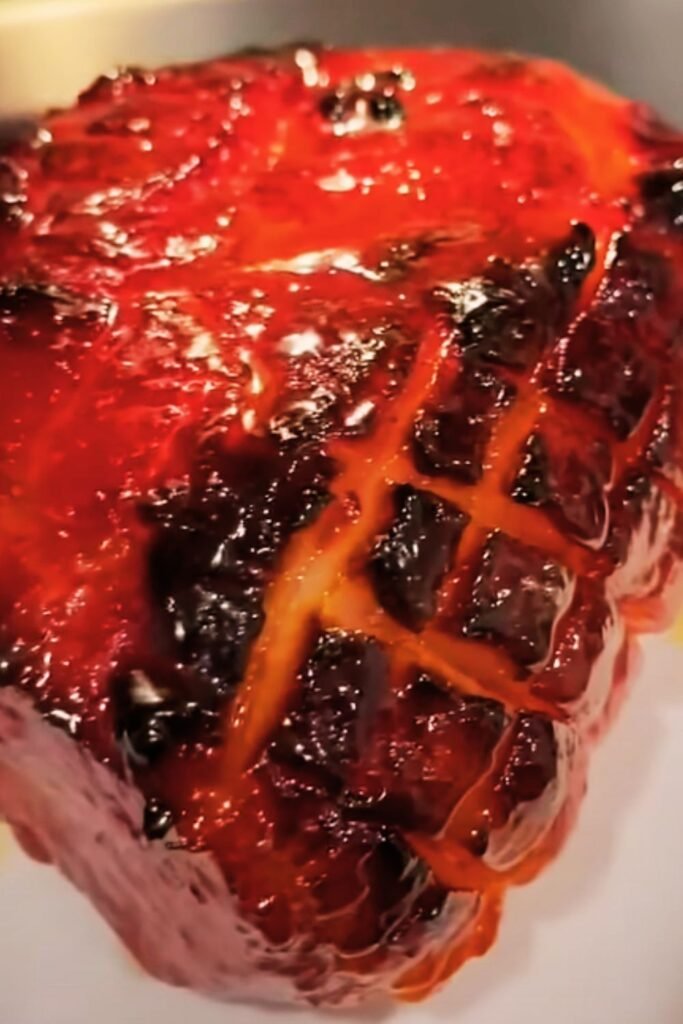There’s something truly magical about the combination of sweet, tangy pineapple and savory ham that brings people together around the dinner table. But when you add a splash of rum to the equation? That’s when things get really interesting! Today, I’m sharing my absolute favorite show-stopping centerpiece for holiday gatherings, family dinners, or any special occasion worth celebrating: Drunken Pineapple Glazed Ham.
I’ve been perfecting this recipe for years, tweaking the balance of flavors until I found the perfect harmony between the natural sweetness of pineapple, the warmth of spices, and just the right kick of rum that leaves everyone asking for seconds. Whether you’re a seasoned cook or trying your hand at a glazed ham for the first time, I’ve broken down every step to ensure your success.
What Makes This Drunken Pineapple Glazed Ham Special
Before we dive into the recipe, let me tell you why this particular glazed ham deserves a place at your table. The magic happens when the rum in the glaze cooks down, leaving behind a complex caramel-like flavor that perfectly complements the natural sweetness of the pineapple and the saltiness of the ham. The alcohol cooks off completely, making this suitable for the whole family while leaving behind that distinctive flavor that elevates this dish from good to unforgettable.
I’ve served this at everything from Christmas dinner to Easter brunch, and even at summer gatherings when I want to impress without spending the entire day in the kitchen. The best part? Most of the cooking time is hands-off, leaving you free to prepare sides or simply enjoy time with your guests.
Ingredients You’ll Need
For the Ham
- 1 fully cooked spiral-cut ham (8-10 pounds)
- 1 fresh pineapple, peeled and cut into rings (or 2 cans of pineapple rings in juice, not syrup)
- Whole cloves (about 20-30)
- 1/4 cup pineapple juice (reserved from canned pineapple or freshly squeezed)
For the Drunken Pineapple Glaze
- 1 cup brown sugar, packed
- 1/2 cup dark rum
- 1/4 cup honey
- 1/4 cup pineapple juice
- 2 tablespoons Dijon mustard
- 1 tablespoon apple cider vinegar
- 1 teaspoon ground cinnamon
- 1/2 teaspoon ground cloves
- 1/4 teaspoon ground nutmeg
- 2 tablespoons butter
- 1 tablespoon cornstarch (mixed with 2 tablespoons cold water)
Equipment Needed
- Roasting pan with rack
- Aluminum foil
- Basting brush
- Meat thermometer
- Medium saucepan
- Whisk
- Toothpicks (for securing pineapple rings)
- Sharp knife
Preparation Time Breakdown
| Stage | Time Required |
|---|---|
| Prep Work | 20 minutes |
| Initial Baking | 1 hour 30 minutes |
| Glazing Process | 45 minutes to 1 hour |
| Resting Time | 15-20 minutes |
| Total Time | About 3 hours |
Step-by-Step Instructions
Preparing the Ham
- Preheat your oven to 325°F (165°C). Position the rack in the lower third of the oven to accommodate the size of the ham.
- Remove the ham from its packaging and discard any plastic disk covering the bone. Rinse the ham under cold water and pat dry with paper towels.
- Place the ham cut-side down (flat side up) on a rack in a large roasting pan.
- Score the ham in a diamond pattern about 1/4-inch deep across the entire surface. This will help the glaze penetrate the meat and create a beautiful presentation.
- Insert whole cloves at the intersection of the score marks, spacing them evenly across the surface of the ham.
- Pour 1/4 cup of pineapple juice into the bottom of the roasting pan. This will help keep the ham moist during baking.
- Cover the ham tightly with aluminum foil and place in the preheated oven. The initial baking will be approximately 15 minutes per pound, so an 8-pound ham would need about 2 hours total, but we’ll be removing it partway through to apply the glaze.

Making the Drunken Pineapple Glaze
While the ham begins baking, prepare your glaze:
- In a medium saucepan over medium heat, combine the brown sugar, rum, honey, pineapple juice, Dijon mustard, and apple cider vinegar.
- Add the ground cinnamon, cloves, and nutmeg, whisking to combine all ingredients thoroughly.
- Bring the mixture to a simmer, then reduce heat to medium-low and let it cook for about 10 minutes, stirring occasionally until it begins to thicken slightly.
- Add the butter and stir until melted and incorporated.
- In a small bowl, mix the cornstarch with 2 tablespoons of cold water until smooth, then slowly whisk this slurry into the simmering glaze.
- Continue cooking for another 2-3 minutes until the glaze has thickened to a consistency that will coat the back of a spoon. Remove from heat and set aside.
The glaze should be thick enough to cling to the ham without running off completely, but still brushable. If it thickens too much as it cools, simply warm it up again with a splash of pineapple juice.
Glazing and Finishing the Ham
- After the ham has baked for about 1 hour and 30 minutes (or when it reaches an internal temperature of about 120°F/49°C), remove it from the oven.
- Carefully remove the foil and increase the oven temperature to 375°F (190°C).
- Brush a generous layer of the glaze all over the exposed surface of the ham, making sure to get it into all the score marks.
- Secure pineapple rings onto the ham using toothpicks, placing them decoratively across the surface. I like to put one in the center and arrange the rest in a circular pattern around it.
- Brush more glaze over the pineapple rings and exposed ham.
- Return the ham to the oven, uncovered, and bake for 15 minutes.
- Remove and brush with more glaze, then return to the oven for another 15 minutes.
- Repeat the glazing process once more, then check that the ham has reached an internal temperature of 140°F (60°C). The surface should be beautifully caramelized and glistening.
- For a final touch of caramelization, you can turn on the broiler for the last 2-3 minutes, watching carefully to ensure the glaze doesn’t burn.
- Remove the ham from the oven and let it rest for 15-20 minutes before slicing. This resting period allows the juices to redistribute throughout the meat, ensuring each slice is moist and flavorful.

Nutritional Information
| Nutrient | Amount per Serving |
|---|---|
| Calories | 345 |
| Protein | 29g |
| Fat | 18g |
| Saturated Fat | 6g |
| Carbohydrates | 15g |
| Sugar | 13g |
| Sodium | 1,020mg |
| Fiber | 0.5g |
| Cholesterol | 85mg |
Note: Nutritional values are approximate and based on about 6 oz of ham with glaze per serving.
Serving Suggestions
A beautiful drunken pineapple glazed ham deserves equally delicious accompaniments. Here are some of my favorite pairings that complement the sweet-savory flavor profile:
Sides That Pair Perfectly
- Creamy scalloped potatoes
- Roasted garlic mashed potatoes
- Buttery green beans with toasted almonds
- Maple-glazed carrots
- Classic dinner rolls
- Southern-style corn pudding
- Fresh spring salad with citrus vinaigrette
- Cheesy cauliflower gratin
Beverage Pairings
- Sparkling apple cider
- Pineapple-orange punch
- Iced tea with mint
- Cranberry spritzer
- Ginger ale

Make-Ahead and Storage Tips
One of the reasons I love this recipe for entertaining is that much of the work can be done ahead of time:
Make-Ahead Options
- The glaze can be prepared up to 3 days in advance and stored in an airtight container in the refrigerator. Warm it gently before using.
- The ham can be scored and studded with cloves the day before, then wrapped tightly and refrigerated overnight.
Storage Instructions
- Leftover ham will keep in the refrigerator for 4-5 days when properly wrapped.
- For longer storage, freeze portions in airtight containers or heavy-duty freezer bags for up to 2 months.
Reheating Tips
- To prevent the ham from drying out when reheating, place slices in a baking dish with a few tablespoons of water, broth, or leftover glaze.
- Cover with foil and heat at 325°F until warmed through (about 10 minutes for a few slices).
- Individual portions can be gently warmed in the microwave at 50% power.
Creative Ways to Use Leftovers
Let’s be honest—one of the best parts about making a glazed ham is the leftovers! Here are some delicious ways to transform your drunken pineapple ham into new meals:
- Cuban sandwiches with ham, Swiss cheese, pickles, and mustard
- Ham and pineapple fried rice
- Split pea soup with ham chunks
- Breakfast hash with diced ham, potatoes, and eggs
- Hawaiian pizza topping
- Ham and cheese breakfast casserole
- Creamy ham and potato chowder
- Ham salad sandwiches with a touch of the leftover glaze mixed into the mayonnaise
Troubleshooting Common Issues
Even experienced cooks can run into problems, so here are solutions to some common challenges:
Glaze Too Thin
If your glaze isn’t thickening properly, mix an additional teaspoon of cornstarch with a tablespoon of cold water and slowly whisk it into the simmering glaze. Continue cooking until it reaches your desired consistency.
Glaze Too Thick
Simply add a splash more pineapple juice or rum (if you want to maintain the boozy flavor) and whisk until smooth.
Ham Drying Out
This usually happens if the ham is overcooked or not properly covered during the initial baking. Ensure you’re using a meat thermometer to check doneness and that the ham is tightly covered with foil during the first stage of cooking.
Cloves Difficult to Remove Before Eating
You can either warn your guests to watch for them or remove them just before serving. Alternatively, you can skip the whole cloves and simply add a bit more ground cloves to the glaze.
Pineapple Rings Falling Off
If your pineapple rings won’t stay put, use more toothpicks to secure them, and consider patting the pineapple dry before placing it on the ham to help the glaze adhere better.
Special Dietary Modifications
This recipe can be adapted for different dietary needs:
Lower Sugar Version
- Reduce brown sugar by half and replace with a brown sugar substitute designed for baking
- Use fresh pineapple rather than canned to avoid added sugars
- Skip the honey and increase the Dijon mustard slightly for balance
Alcohol-Free Version
While the alcohol in the rum does cook off during the baking process, you can substitute apple juice or pineapple juice with a tablespoon of molasses for depth of flavor if you prefer not to use alcohol at all.
Lower Sodium Option
Choose a lower-sodium ham and reduce the amount of added salt in any side dishes you serve. The glaze itself is relatively low in sodium.
The History Behind Glazed Ham
The tradition of glazing ham with sweet ingredients has been around for centuries. Historically, sugar and spices were luxury items, so a glazed ham often signified a special occasion or celebration. The addition of pineapple became popular in the 1920s when James Dole’s Hawaiian Pineapple Company (now Dole Food Company) began mass-producing canned pineapple, making it widely available across America.
The “drunken” element—adding spirits to food—has been a culinary technique since medieval times, used not only for flavor but originally as a preservation method. Today, we continue this tradition purely for the complex flavor it brings to our favorite dishes.
Q&A Section
Q: Can I use a different type of alcohol instead of rum? A: Absolutely! Bourbon works wonderfully and gives a different dimension to the glaze. You could also try brandy or even a spiced whiskey. Each spirit will bring its own unique character to the final dish.
Q: How do I know when my ham is done cooking? A: Since most hams are sold fully cooked, you’re really just heating it through. Your ham is ready when it reaches an internal temperature of 140°F (60°C) when measured with a meat thermometer inserted into the thickest part (but not touching the bone).
Q: Can I make this recipe with a fresh (uncooked) ham? A: This recipe is designed for pre-cooked hams. If you’re working with a fresh ham, you’ll need to adjust the cooking time significantly (about 15-20 minutes per pound until it reaches 160°F/71°C) and apply the glaze only during the last hour of cooking.
Q: Is there a way to make this recipe ahead for a party? A: Yes! You can bake the ham completely the day before, let it cool, and refrigerate. On the day of serving, slice it cold (it’s actually easier to get neat slices this way), arrange on an oven-safe platter, cover with foil, and heat at 325°F for about 25-30 minutes until warm. You might want to reserve some of the glaze to brush on just before serving for that fresh-glazed look.
Q: My ham is smaller/larger than the recipe calls for. How do I adjust the cooking time? A: The general rule is 15 minutes per pound for a pre-cooked ham at 325°F (165°C). So for example, a 5-pound ham would need about 1 hour and 15 minutes total cooking time, while a 12-pound ham would need about 3 hours. Remember that you’ll be removing it partway through to apply the glaze.
Q: Can I freeze the leftover ham? A: Definitely! Slice or cube the leftover ham, wrap it well in freezer-safe packaging, and freeze for up to 2 months. Thaw overnight in the refrigerator before using.
Q: What can I do if my glaze starts to burn in the oven? A: If you notice the glaze beginning to darken too quickly, simply tent some foil loosely over those areas while leaving other parts exposed to continue caramelizing. Also, make sure your ham isn’t positioned too close to the heating element.
Q: How far in advance can I make the glaze? A: The glaze can be made up to 3 days ahead and stored in an airtight container in the refrigerator. Warm it gently on the stovetop or in the microwave before using, as it will thicken considerably when chilled.
Final Thoughts
There’s something deeply satisfying about presenting a beautifully glazed ham as the centerpiece of a special meal. The combination of sweet, tangy pineapple, warm spices, and the rich complexity of rum creates a dish that appeals to all the senses—from its enticing aroma as it bakes to its glistening appearance and, of course, its incredible flavor.
What I love most about this recipe is how it transforms something as simple as a ham into an occasion. Whether it’s for a holiday gathering, Sunday dinner with family, or a celebration with friends, this drunken pineapple glazed ham never fails to impress, while still being approachable enough for any home cook to master.
Remember that cooking should be enjoyable, so don’t stress too much about perfection—the layers of flavor in this glaze are forgiving, and the end result will be delicious regardless of whether you’re a seasoned pro or trying it for the first time. And if you’re lucky enough to have leftovers? Well, that’s just an opportunity for more delicious meals in the days to come.
Happy cooking, and may your drunken pineapple glazed ham bring as much joy to your table as it has to mine!